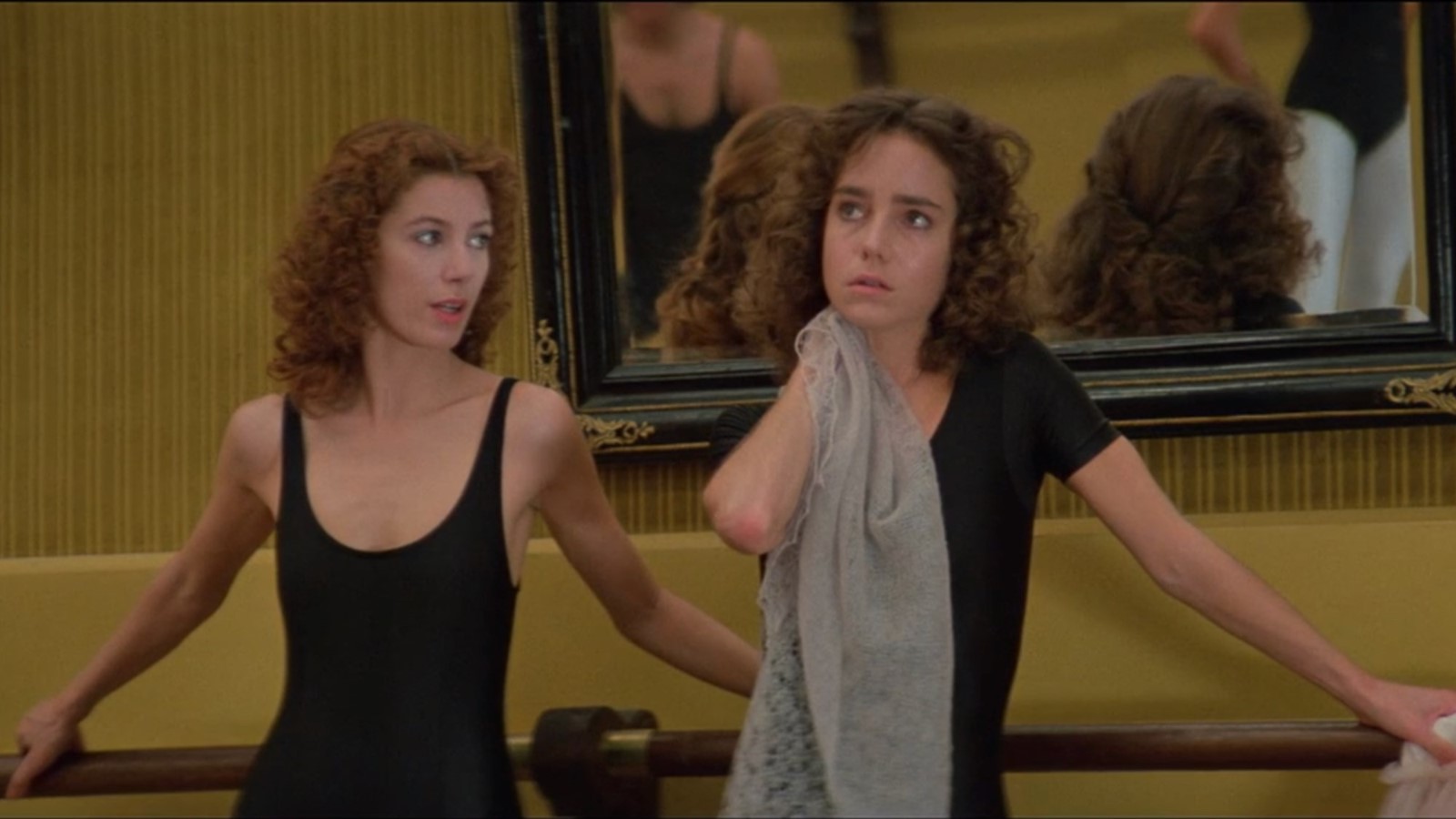Girlhood Studies: How has visual culture shaped ideas of female adolescence? In the third season of her AnOthermag.com column, Claire Marie Healy tells the story of girlhood through clothes.
Of all the items of clothing most powerfully associated with girlhood, ballet shoes are the most paradoxical. That’s because, though they serve a practical function in a discipline that should really be considered an extreme sport, the world of the ballet shoe – like a young dancer’s feet forever en pointe – seems to hover just above the ground. It’s a world of grace, femininity, delicacy, and (baby) pink: all those things that little girls are supposedly made of.
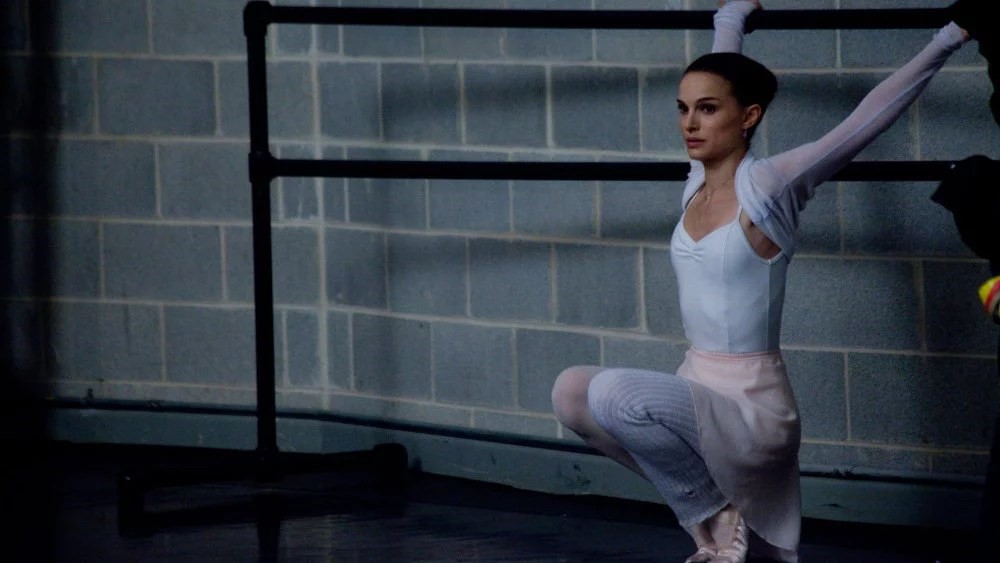
But, as Camille Laurens writes, “Dance is not a fairy tale, it’s a painful profession.” The French writer is speaking here about Degas’ famous ballerina (in her 2018 book Little Dancer Aged Fourteen), the three-feet tall piece of visual culture that drew much focus onto the reality of ballet for teenage girls on its debut in 1881. It’s well known that the original Little Dancer (based on a real teenaged trainee, Marie Van Goethem) was deemed strange on its big reveal because it was rendered in wax; less discussed, but probably as disconcerting to the audience, is the fact she wore a real pair of ballet shoes, as though she’d stepped from the stage wings straight into a glass viewing case.
Ballet shoes feel like they have a kind of frailty built into them, like they are pure aesthetic (an impracticality that makes them all the more desirable for balletcore flawlessness). But the ballet shoe – or pointe shoe – actually exists in order to equip dancers for their most difficult feats. Their flatness came about when leaps, turns and full extensions of the feet became essential to early ballet practices; their ‘toe box’ was developed, by the 19th century, as a response to dancers historically padding their toes for comfort when they had to be en pointe. This box at the toes is complemented by the shank, the hard insole that supports the arch of the foot. Together, they supposedly prepare ballerinas to perform the most damaging and superhuman of their movements, but they offer little in the way of actual protection. Pointe shoes, so directly tied up with a ballerina’s own coming-of-age (the youngest age to safely begin pointe work is generally agreed to be 11) are a powerful symbol of the kinds of expectations placed on all girls as they become themselves.
Ballet shoes and young ballerinas have an intertwined physicality that is intriguing; and that is, if we’re being honest, centred in pain. It’s a reality discussed in detail at the high point of a recent podcast, The Turning: Room of Mirrors, in which former teen ballerina Erika Lantz examines ballet culture in the aftermath of Georges Balanchine, the late New York City Ballet founder who left a legacy both remarkable and troubling. In the final episode, Chloe Angyal, the author of the book Turning Pointe: How a New Generation of Dancers Is Saving Ballet from Itself (2021) uses the shoe to stamp a simple point of clarity: that is, why are people so obsessed with how much going en pointe messes up girls’ feet?
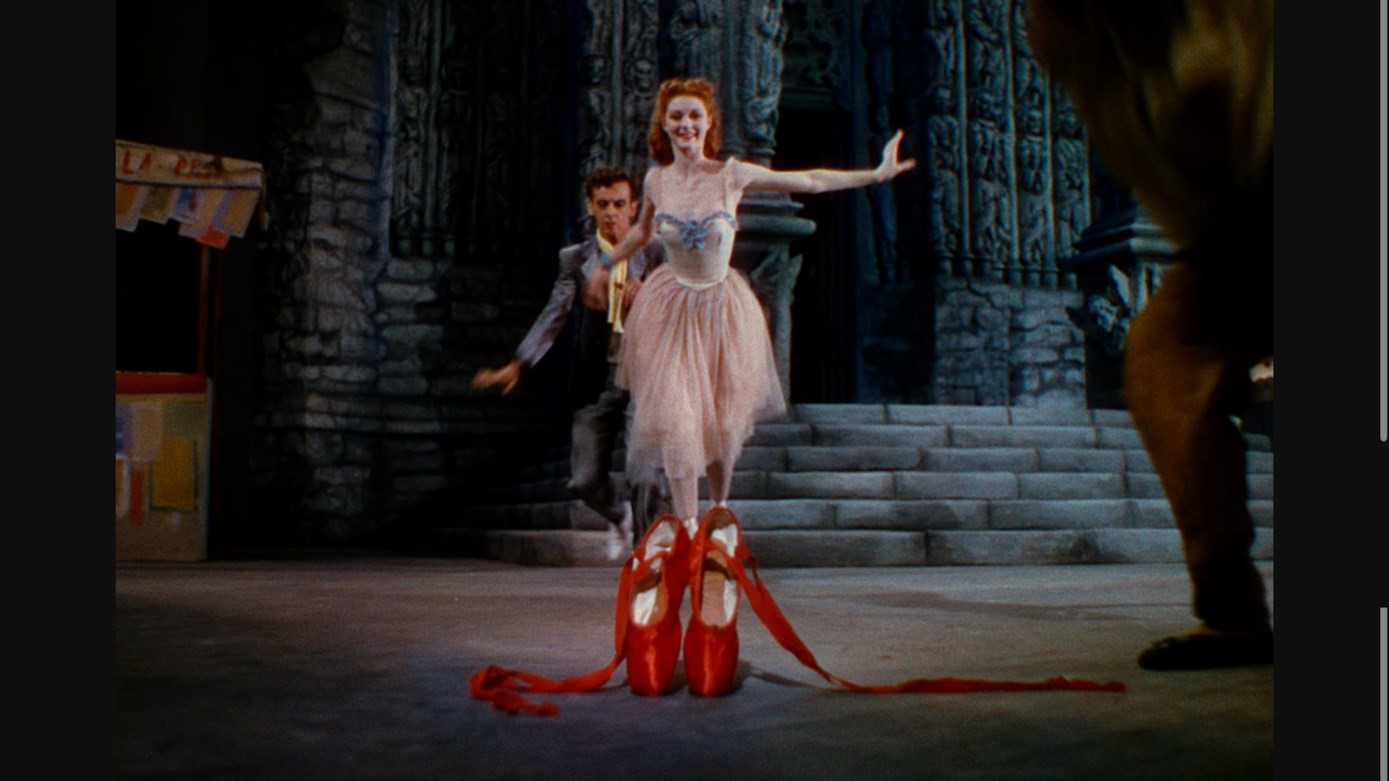
“One of the things that you learn in ballet is what a good woman looks like: how you’re supposed to look, how you're supposed to move, how you're supposed to behave, how you're supposed to tolerate pain ...” describes Angyal. “Should we really be applauding people for being able to conceal their pain as well as they do? Is that really a skill that we want young people – and particularly young women and girls – to be cultivating and perfecting?”
One of the most visceral depictions of that physicality is captured in Darren Aronofsky’s Black Swan (2010). Early in the film, we see Nina scrape, knife, rip, and stitch her shoes; she tapes her bloody toes up, and smacks the shoes down against the hard floor. The audio of all these movements is in a kind of loudness war with the piano piece that serves as the scene’s background music; they scrape against the ears, like Nina’s scissors do against the leather soles.
In that film, the war waged on the shoe – an everyday occurrence for any ballet dancer, who always customises their shoes for their own feet – visually anticipates the bloody war between Nina’s mind and body: her own inner and outer layers. On a recent rewatch, I enjoyed Black Swan’s window on 2010s balletcore, all baby pink shrugs and ugg boots. But while its tragic, violent tone can feel a little overwrought now, it matches how most films about ballet approach their young girl protagonists. For young women on screen, dancing ballet is usually akin to stepping into an idealised fantasy world that can never adhere to reality – usually, with drastic results.
The bible for depictions of ballet on film was established in The Red Shoes (1948), a film about obsession, artmaking and a girl’s coming-of-age on stage that was always designed to come on strong. Telling the story of Vicky Page (played by Moira Shearer, a real ballerina), the central moment of the film is a ballet performance inspired by the dark Hans Christian Andersen fairytale, in which a pair of red shoes cause a girl to dance to her death. Vicky’s tragedy is how she confuses dancing with life; a lesson punctuated vividly in the dramatic world of The Red Shoes, but also echoed in the real-life reflections of young ballerinas. As Gelsey Kirkland, a Balanchine disciple writes in her excellent, spookily-titled autobiography Dancing on My Grave (1986), “I experienced dreams as if they were real, unable to distinguish them from the world outside my mind … In crossing the border between the real and imaginary, I discovered a secret place where some measure of tenderness might prevail.”
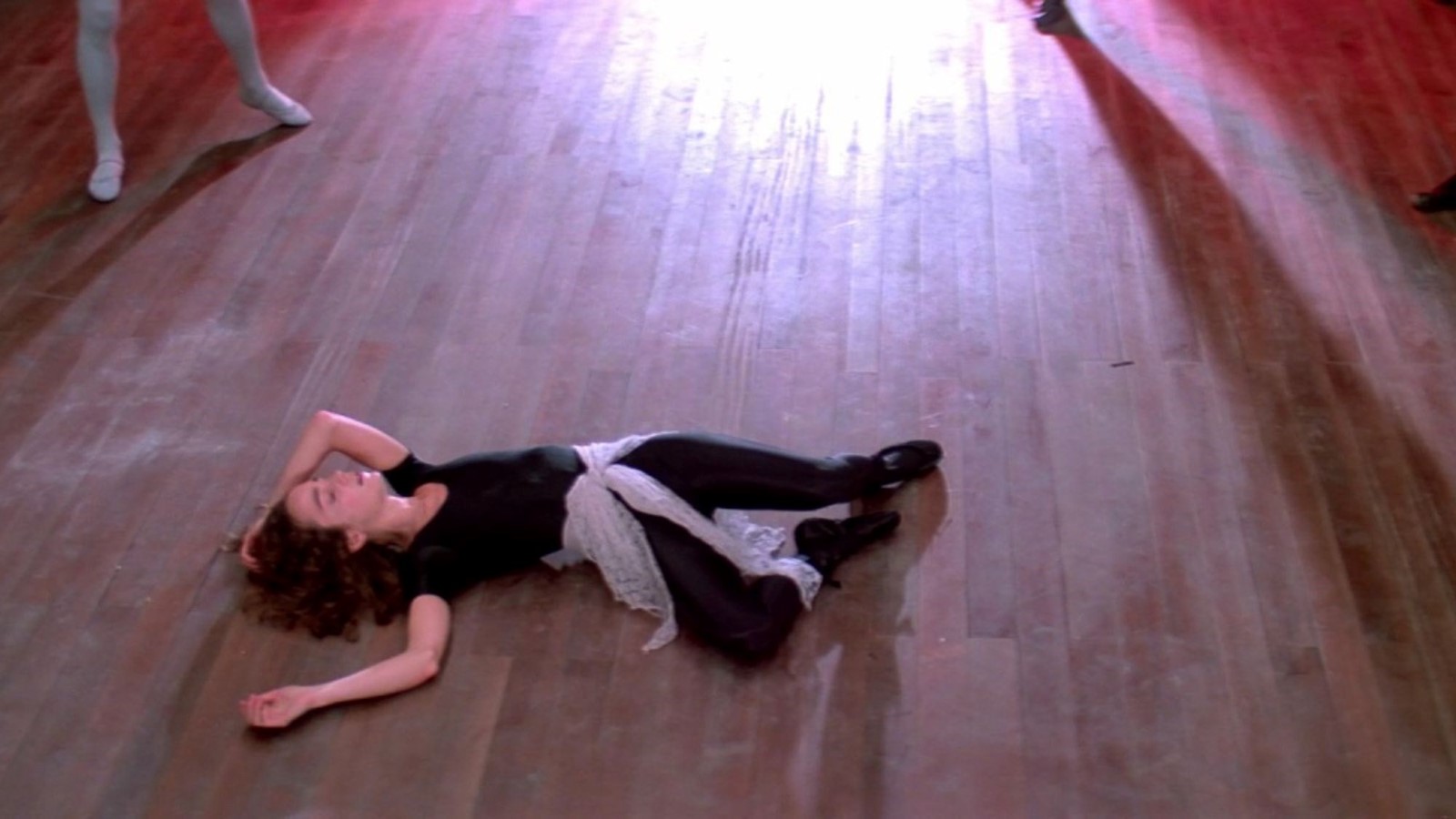
Dario Argento’s Suspiria (1977), set in a prestigious dance school, shares a ballerina protagonist (played by Jessica Harper) and an unsubtle Technicolor palette with The Red Shoes. But strangely, there’s not much in the way of ballet dancing in the cult Italo-Horror (a lack of movement countered by Luca Guadagnino’s Martha Graham-charged remake in 2018). Still, on closer viewing, the ballet shoes themselves gesture to hidden meanings couched in Argento’s witchy plot. The director hovers amid Suzy’s first conversation with the other dancers in the changing room for a strange amount of time, an exchange that centres around whether she can borrow someone’s ballet shoes, or if she should have to pay. And when our heroine later collapses in a dance lesson, in the only class we are privy to, she staggers and sways on her toes: the result of supernatural forces at work, or, in another reading, simply the discomfort of the effort of perfection. It’s a moment that has an afterlife in GIF form online, where, on Tumblrs with names like ‘Glitter & Gloom’, a quartet of Suzys twirl, tremble and fall on a loop.
The ballet shoes of Suspiria may be black, and those of The Red Shoes may be blood-red, but away from the screened world of dance-horrors, real ballet shoes have historically been peachy pink. That’s because the pale colour of the classic ballet shoe, less a simple case of girlish association, was established on the premise of the dancer always being white.
What’s worse, such an exclusionary matter of costume can be argued by schools as simply being inbuilt into a key tenet: the line. The concept of a long, slender shape, from fingertips to pointed toe, is as much an all-important precept as the fact the girls go en pointe, and the boys do not. In its overwhelming emphasis on “clean lines”, such language is coded with ballet’s historic racism and fatphobia.
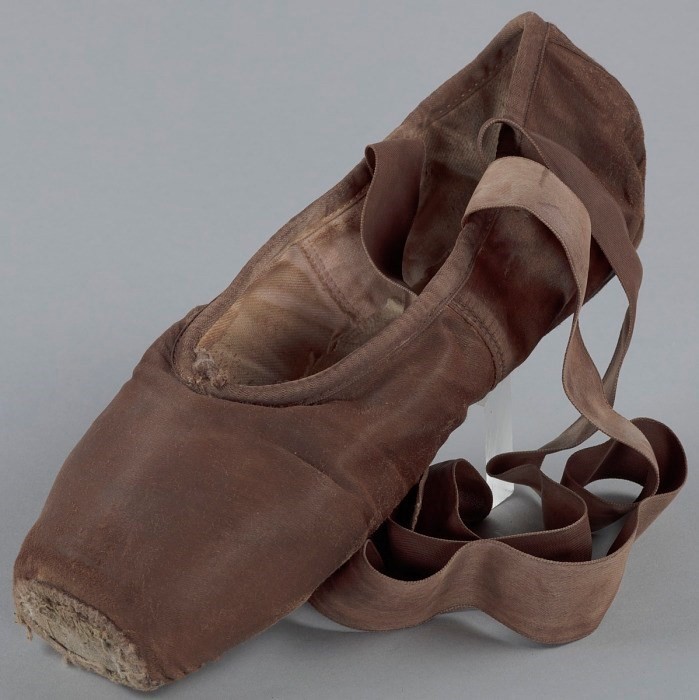
These shoes, now in the Smithsonian, are a historical testament to the pervasive whiteness of ballet and the resistance of individual girls towards changing that. As worn by Ingrid Silva of Dance Theatre of Harlem, they are one of the many pointe shoes that Silva painted herself using brown-tone foundation to match her own skin. The technique – known as ‘pancaking’ – is one many Black ballet dancers have been forced to use due to ballet shoes only being available to them in lighter tones. Silva was only 18 when she moved from Rio de Janeiro to New York City to dance for Dance Theatre of Harlem – but would have to wait until 2019, over a decade later, to receive her first pair of custom-coloured shoes.
In Ngozi Onwurah’s Flight of the Swan, a Nigerian immigrant schoolgirl, Obi, endures racist bullying when she auditions for a prestigious ballet school (in class with white girls, she has white tights and pink ballet shoes to match them). Told to embrace “contemporary dance” instead (feedback endured by many classical ballet dancers of colour over the years), the film ends with a dance that shows the young protagonist carving a way forward in a space that is hostile to her. Set to the strains of Swan Lake, it’s beautifully life-affirming and joyful despite being just ten minutes long.
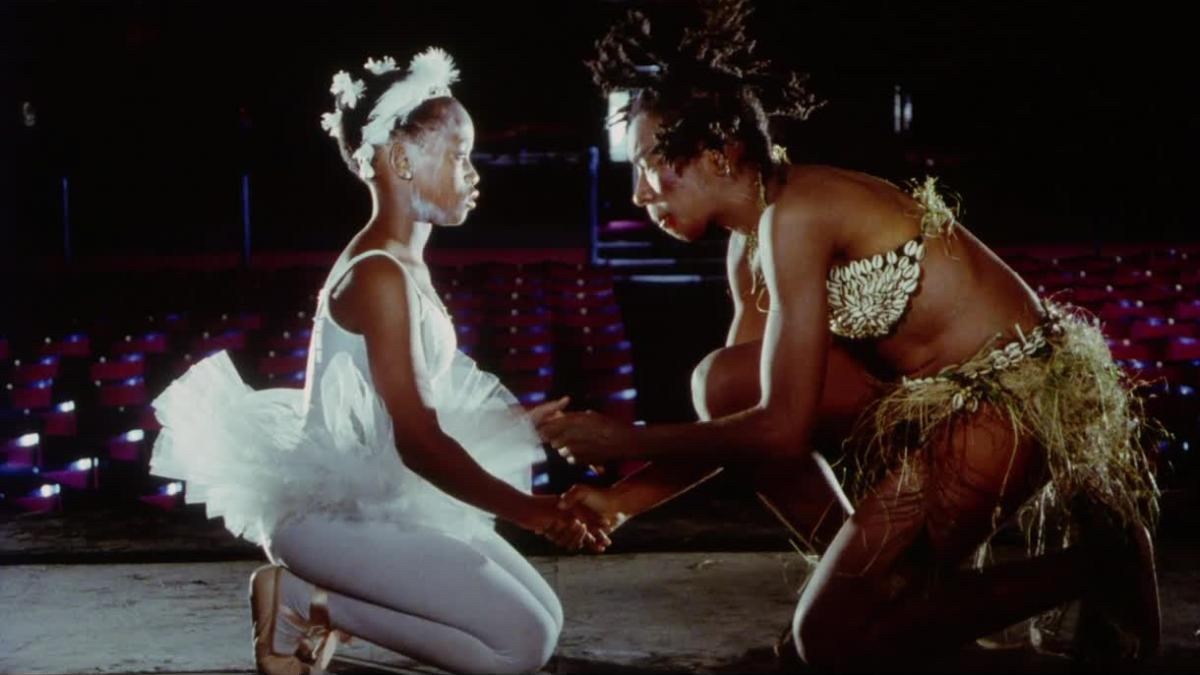
The Turning ends on its own note of the potential for change, too. The podcast itself performs a kind of changement from the austere days of Balanchine, to give airtime to Black, and/or queer ballerinas to speak in its final episodes. (We hear, for instance, from a dancer-turned-choreographer who puts together what might be the first Pas de Deux between two women).
The physical architecture of the ballet shoe produces its own metaphor for idealised girlhoods: the expectation to appear shiny and flexible, and to conceal unruly or dysfunctional interiors. But as classical ballet frees itself up for change – even within the parameters of the rules that make ballet so unique – maybe the ballet shoe could become associated with a kind of freedom among girls, too. Like Lynette Yiadom-Boakye’s paintings of young ballet dancers, which sometimes seem to leap away from the need for shoes at all; or a picture of Edie Sedgwick in Vogue, “pirouetting on a bed in front of a drawing of a horse” that Patti Smith immediately cut out and put on her wall. Or, as usual, the best testament to a changing world is to look at the artmaking of teenage girls themselves: like the many #BalletTok posts from young, on-the-rise ballerinas, opening up the practice to the outside world, beyond the expectations of the room of mirrors.
